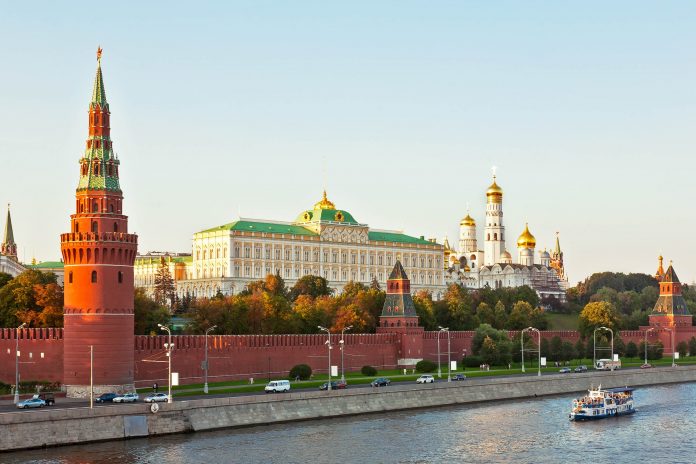Der Kreml in Moskau ist nicht nur weltbekannter Sitz des russischen Präsidenten, sondern auch ein fantastisches Freilichtmuseum mit monumentalen Prachtbauten aus dem 15. bis 19. Jahrhundert.
Der Kreml in Moskau ist Sitz des russischen Präsidenten und das Markenzeichen der Stadt schlechthin. Kein Tourist darf Moskau wieder verlassen, ohne den Kreml besucht zu haben. Die eindrucksvolle ehemalige Burg im Zentrum der Stadt ist auch gleichzeitig der älteste Teil Moskaus. Zusammen mit dem Roten Platz und der weltbekannten Basilius-Kathedrale zählt der Moskauer Kreml seit 1990 zum Weltkulturerbe der UNESCO.
Inhaltsverzeichnis
BILDER: Moskauer Kreml
Entstehung des Kreml in Moskau
Der heutige Kreml entstand im späten 15. Jahrhundert durch Großfürst Iwan III. aus einem 300 Jahre alten Bollwerk, welches an den Ufern der Moskwa errichtet wurde. An die ehemalige Verteidigungsanlage in Form einer Zitadelle erinnert noch heute die mächtige Umfassungsmauer. Sie ist über 2km lang, 5m dick, 19m hoch und von 20 eindrucksvollen Wehrtürmen gespickt.
Der bekannteste unter ihnen ist der 71m hohe Spasskije worota („Erlöserturm“) auf dem Roten Platz, der als offizielles Eingangstor zum Kreml fungiert und mit einer 6m großen Uhr geschmückt ist. Besucher dürfen das „steinerne Herz Moskaus“ durch den Iroizkoja baschnja („Dreifaltigkeits-Turm“) betreten.
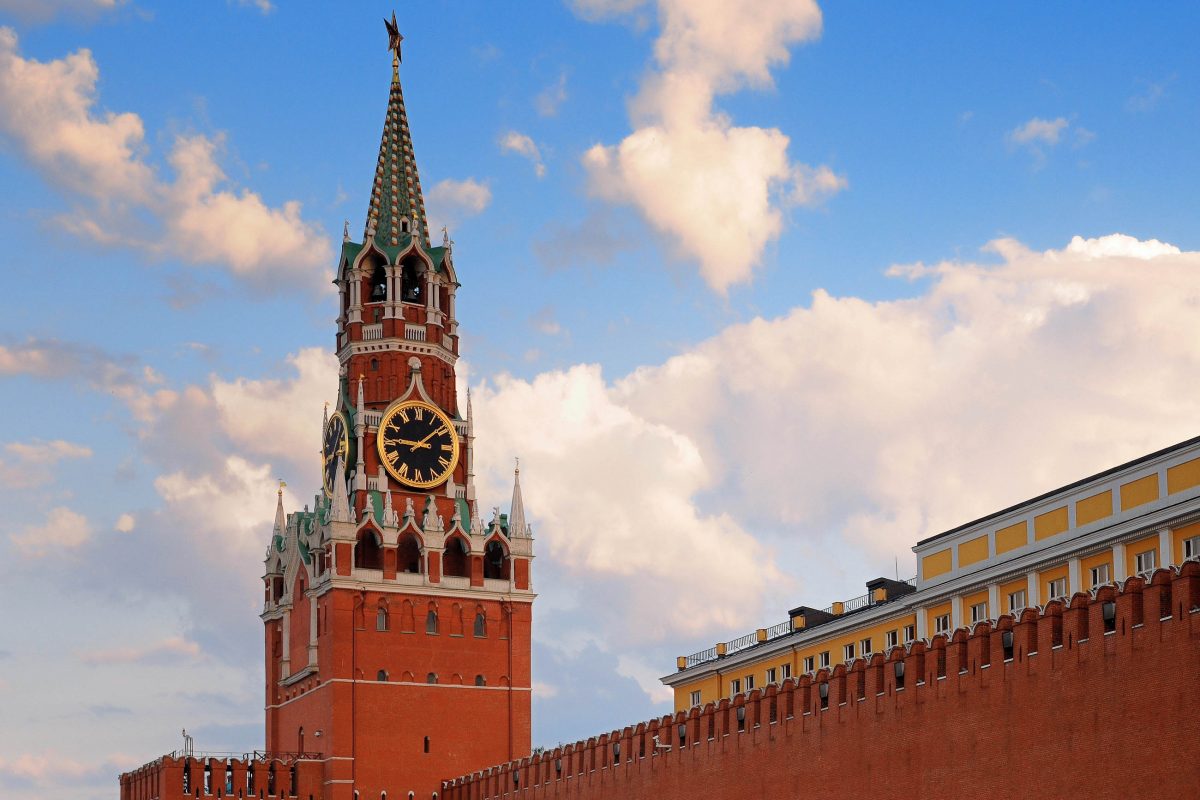
Bis zum Anfang des 18. Jahrhunderts fungierte der Kreml auch als Herrschersitz für die Großfürsten Moskaus, dann verlegte Zar Peter I. die russische Hauptstadt bis 1918 nach St. Petersburg. Trotzdem fungierte der Kreml ununterbrochen als Zentrum des geistlichen und kulturellen Lebens in Moskau. Im Lauf der Jahrhunderte litt der Kreml immer wieder unter feindlichen Angriffen, wie etwa den Truppen Napoleons, er wurde jedoch sofort wieder aufgebaut. Sein heutiges Erscheinungsbild stammt aus dem frühen 19. Jahrhundert.
Der Kreml heute
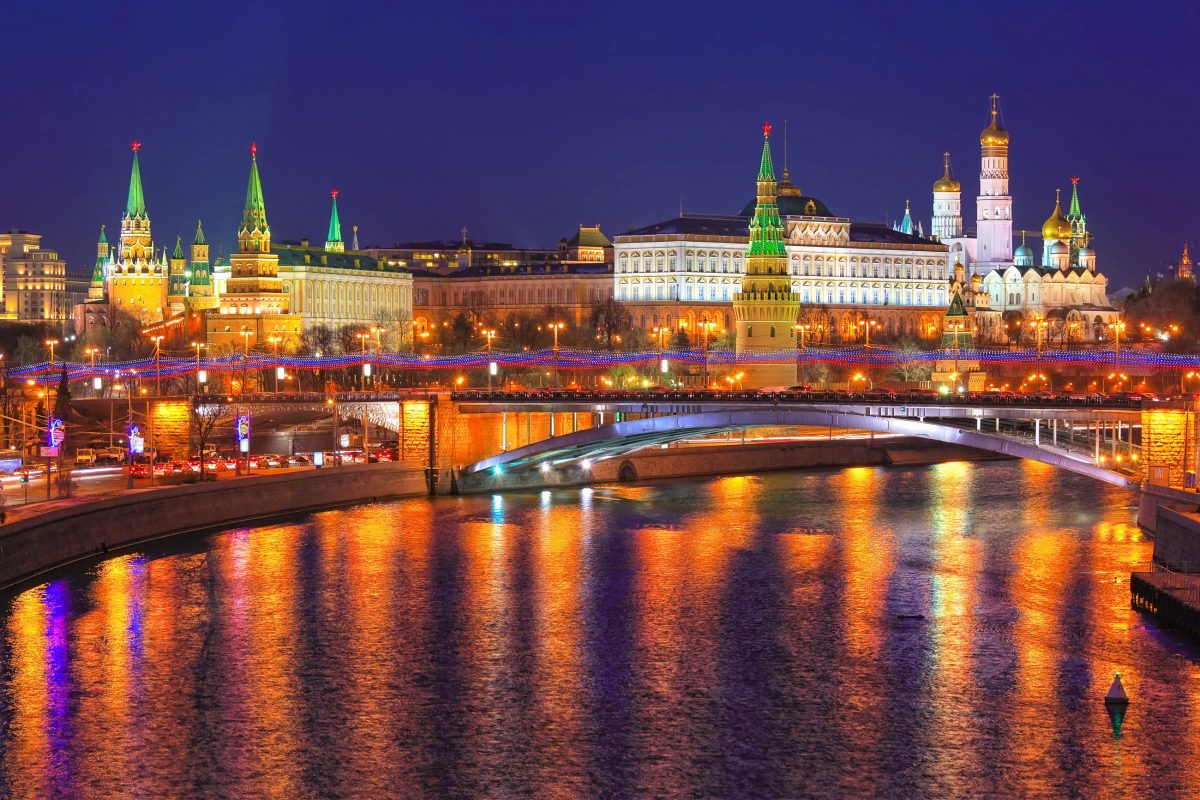
Heute ist der Kreml nicht nur Sitz der russischen Regierung und des Patriarchen der russisch-orthodoxen Kirche, sondern mit einer Fläche von knapp 30 Hektar das größte Freiluftmuseum der Welt. Der Kreml beherbergt prachtvolle Paläste, monumentale Kirchen und faszinierende Museen.
Die Bauten im Kreml stammen alle aus verschiedensten Epochen und bilden ein atemberaubendes architektonisches Ensemble. Der Reichtum der russischen Zaren vom 15. bis zum 17. Jahrhundert spiegelt sich in der meisterhaften Bauweise und der prunkvollen Ausstattung der Paläste und Kathedralen wider.
Highlights des Kreml
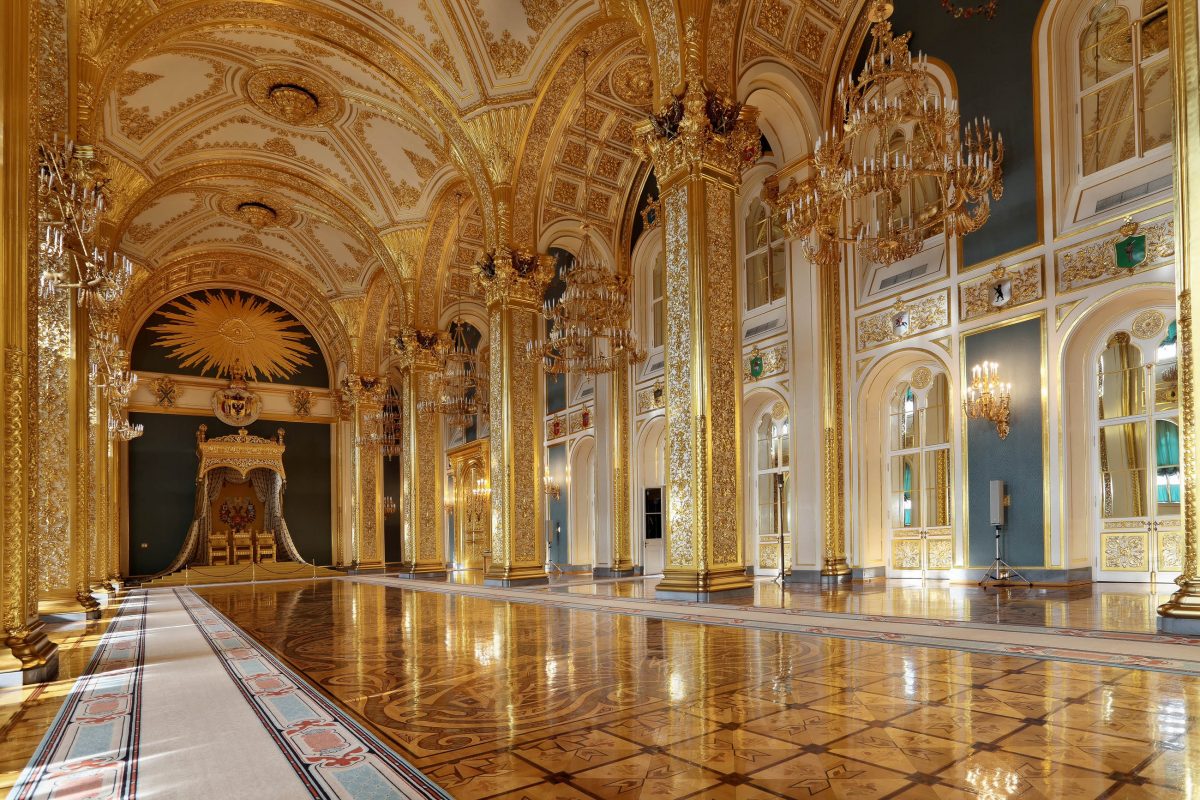
Im Großen Kremlpalast befinden sich die Gemächer und die Arbeitsräumlichkeiten der Russischen Regierung. Außerdem gehören der Facettenpalast mit dem sehenswerten Empfangssaal, der Goldene Zarenpalast, der Terempalast und einige Palastkirchen zu dem Gewaltbau.
Ebenfalls in der Nähe des Großen Kremlpalastes liegt die Rüstkammer, in der 4.000 Exponate an kostbaren Waffen, Rüstungen, Thronen, Gewändern, Rüstungen und königlichen Schätzen ausgestellt sind. Weitere Waffen und Kanonen sind im und vor dem Arsenal zu sehen, das heute als Kommandozentrale der Kreml-Bewachung dient.
Der Senatspalast, ein runder säulenbewährter Palast mit zwei Flügeln in kräftigem Ocker, wird auch „russisches Pantheon“ genannt. Im ehemaligen Sitz der sowjetischen Regierung residiert heute der russische Staatspräsident.
Absolut nichts mit den Prachtbauten in der Umgebung zu tun hat der kommunistische Klotz des Staatlichen Kremlpalastes. Für den Bau dieses Ungetüms mussten leider mehrere historische Bauten des Kreml weichen. Früher Sitz der Partei wird er heute als Veranstaltungsort für Opern und Ballett-Aufführungen genutzt.
Kirchen im Kreml

Die schneeweiße Mariä-Entschlafens-Kathedrale mit den goldenen Kuppeldächern war lange Zeit die wichtigste Kathedrale Russlands, in der Zaren gekrönt, Zeremonien abgehalten und Staatsakte verkündet wurden.
Die Mariä-Verkündungs-Kathedrale galt als Hauskirche der Moskauer Großfürsten und ist mit prachtvollen Fresken bekannter russischer Maler geschmückt.
In der Erzengel-Kathedrale liegt der grausame Herrscher Iwan der Schreckliche in Gesellschaft anderer russischer Großfürsten und Zaren begraben. Der Glockenturm Iwan der Große, war mit 81m lange das höchste Gebäude Moskaus.
Die Gewandniederlegungs-Kathedrale ist die fünfte im Bunde der schneeweißen Sakralbauten mit goldenen Kuppeln. Sie ist die Hauskirche der russischen Patriarchen und beherbergt eine prächtige Ikonenwand aus dem 17. Jahrhundert.
Im Gegensatz zu den Sakralbautan ein schneeweißer Palast mit silbernen Kuppeln ist der Patriarchenpalast. Dies ist die ehemalige Residenz von Russlands oberstem geistlichen Würdenträger, der heute als Museum über die russische Kultur im 17. Jahrhundert fungiert.
Zarenkanone und Zarenglocke
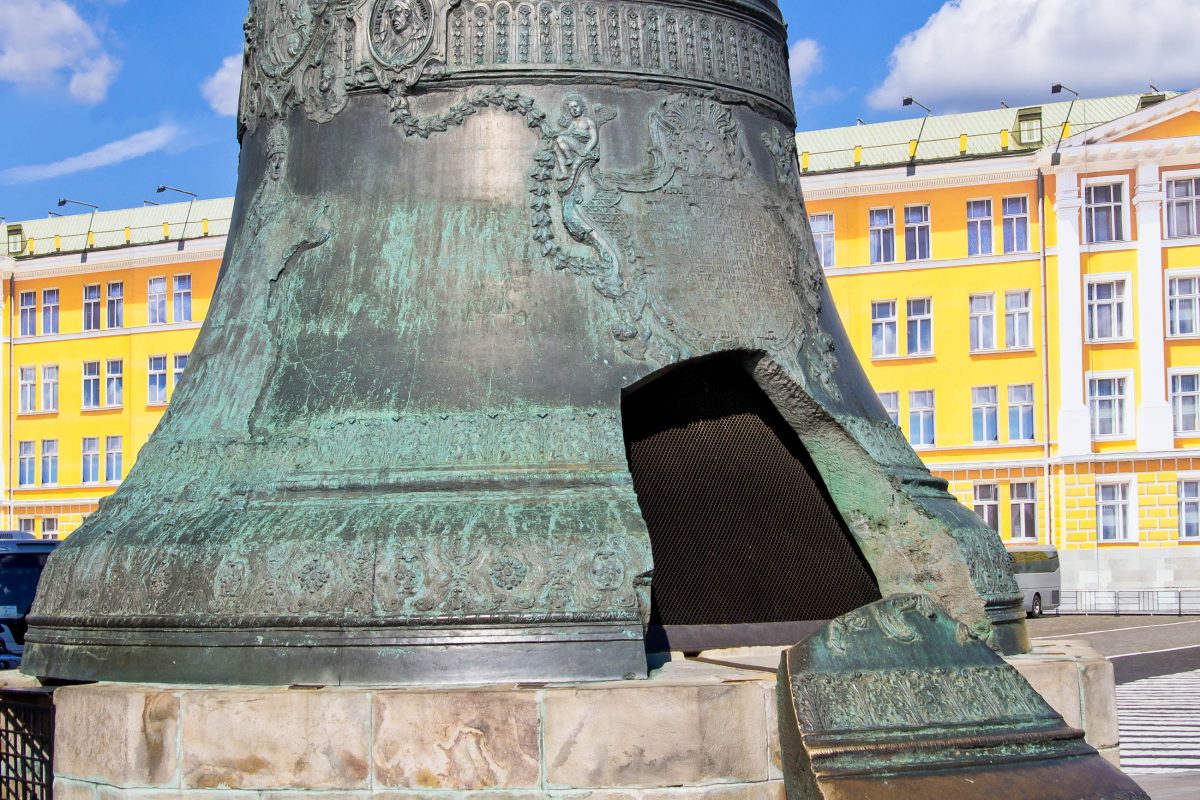
Neben den fantastischen Gebäuden können innerhalb der Kreml-Mauern auch die einst größte Kanone der Welt, die 40 Tonnen schwere „Zarenkanone“ und die 200 Tonnen wiegende „Zarenglocke“ besichtigt werden. Die 6m hohe Glocke sollte eigentlich von „Iwan dem Großen“ herunter läuten, konnte jedoch nie aus der Grube gehoben werden, in der sie gegossen wurde.
Als dann nach einem Feuer auch noch ein Stück absprang, verzichtete man auf die Aufhängung im Glockenturm und setzte sie 1836 auf ihr steinernes Podest im Kreml. Bis heute beansprucht sie den Titel der weltweit größten Glocke für sich.
Weiterführende Links:

